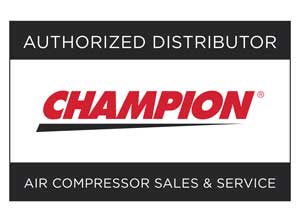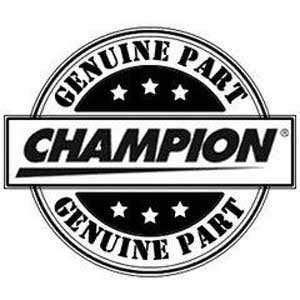Basic Compressed Air Filter Information
Filters are one of the most important components in a compressed air system.
Clean, dry, oil free compressed air and gas is a basic need for many industries.
One drop of unwanted oil can cause an entire automated process to malfunction.
It can cause seals in pneumatic valves and cylinders to swell, resulting in sluggish operation -
or in worst cases, complete seizure of moving parts.
3 things that can contaminate your compressed air system and ruin your product or processes:
1) Solid particles come from ambient air contaminants like dust and from rusted, oxidized pipework.
They will cause pneumatic equipment to malfunction, cause instrument and control failures, and contaminate end products.
2) Condensed water droplets come from the humidity in ambient air.
Water will oxidize pipework and pneumatic equipment, ruin paint finishes and end products.
3) Liquid oil and oil vapors are introduced by compressor lubricants and by hydrocarbon
vapors present in ambient air. Oil-free compressed air is particularly important in food and pharmaceutical processes.
While a dirty system can usually function adequately, it does so at the expense of downstream components.
Liquid water and contaminants can damage the inside of pipes and other pneumatic components.
Also, many pneumatic valves and cylinders contain small orifices that can easily get plugged with contamination.
Because compressed air quality requirements vary considerably by industries, so does the type of filter needed.
Matching the level of filter used in the system to the quality of air required is the most cost effective
and energy efficient option.
Sizing compressed air filters at 2 x (twice) the compressors cfm flow rate will
lower the pressure drop in the filters.
This will result in:
1. Saving energy
2. The elements will last 2 x longer
3. Save on maintenance expense
Basic Filter Tips:
- Install piping by-pass for maintenance of filters.
- For critical applications install duplex filter system with piped by-pass.
- Install differential gauge to monitor element life.
- Change when DP is 10 psig or gauge is in the hi-yellow or red zone.
- Use auto drain as contaminants collect on the bottom of the filter housing and must be drain away to prevent re-entrained.
- Keep spare filter element kits on hand to prevent down time.
- Check drains and DP gauges for proper operations daily.
Compressed Air Line Particulate Filter
Particulate Filter / General Purpose Filter:
- Removes harmful liquid oil, water condensate, pipe scale, dirt and rust from your compressed air system.
This helps prevents contaminants & corrosive damage to compressed air equipment and finished products.
Air flows enters filter media from outside, flows to inside of filter media in standard particulate filters.
Micron ratings 3 through 40 microns usually. Watch the arrow on filter for compressed air flow direction.
Air flows enters from inside to outside through filter media in premium quality particulate filters.
Micron rating 1 through 3 microns. Watch the arrow on filter for compressed air flow direction.
Contaminants collect on the bottom of the filter housing and must be drain away to prevent re-entrained.
There are manual drains, float drains, timed solenoid drains & electronic level drains all
do a good job in the right application.
ISO 8573.1 Air Quality Classes range from class 1 through 6.
The maximum solid contaminants particle size in microns, that will pass through the filter element is from
(class 1 = 0.1 micron) through (class 5 = 40 microns).
Remember the lower the micron rating number, the more contaminants removed &
the higher the air pressure drop through filter.
Typically, particulate filters are installed upstream of coalescing filters / oil removal filters to
insure high efficiency and long element life, also as pre-filter for regulators to prevent valve failure.
- Particulate Filter / General Purpose Filter are used in applications as the first filter treatment the majority of times.
Compressed Air Line Coalescing Filter
Coalescing Filter / Oil Removal Filter:
- Removes harmful oil aerosols by coalescing action.
Coalescing by definition, means " To come together".
It is a continuous process by which small aerosols come in contact with the fibers in the filter media,
uniting with the collected aerosols and growing to emerge as a droplet on the downstream surface of the media
which by its weight is gravitationally drained away.
Air flows enters from inside to outside through the filter media in coalescing filters.
Microns rating 0.03 through 0.01 microns. Watch the arrow on filter for flow direction.
Contaminants collect on the bottom of the filter housing and must be drain away to prevent re-entrained.
There are manual drains, float drains, timed solenoid drains & electronic level drains all do a good job in the right application.
ISO 8573.1 Air Quality Classes range from class 1 through 6.
The maximum oil content remaining in parts per million by weigth (class 1 = 0.008 ppm) up to (class 5 = 21ppm)
that will pass through the filter element .
Remember the lower the part per million number, the more contaminants removed &
the higher the air pressure drop through filter.
Typically, coalescing filters are installed downstream of particulate filters for oil aerosol removal,
and to insure high efficiency and long element life when an adsorber / vapor removal filter is installed.
- Coalescing Filter / Oil Removal Filter are used in oil free compressed air applications as the second filter.
Compressed Air Line Adsorber Filters
Adsorber Filter / Vapor Removal Filter:
- Removes oil vapors, oily odors and solids particulate specifically for those applications
that will not tolerate the presence of oil vapors and associated odors.
The core consists of multi wrapped layers of impregnated activated charcoal particles to increase its
purification qualities.
Air flows enters from inside to outside through the filter media in adsorber filters. Microns rating 0.01.
Oil concentration of 0.003 parts per million by weight. Watch the arrow on filter for flow direction.
Contaminants collect on the bottom of the filter housing and must be drain away to prevent re-entrained.
There are manual drains, float drains, timed solenoid drains & electronic level drains all do a good job in the right application.
ISO 8573.1 Air Quality Classes range from class 1 through 6. The maximum oil content remaining in parts per million by weigth
(class 1 = 0.008 ppm) up to (class 5 = 21ppm) that will pass through the filter element.
Remember the lower the part per million number, the more contaminants removed & the higher the air pressure drop through filter.
Typically, adsorber filters are installed downstream of particulate filters and coalescing for oil aerosol and odor removal.
- Adsorber Filter / Vapor Removal Filter are used in true oil free compressed air applications as the third filter.
Listed below are types of filtration equipment available from Champion Air Compressors.
Water Separator
Installation: after an air compressors’ (or a stand-alone) aftercooler
Design: One-stage filtration with two stainless steel orifice tubes. Labyrinth style air flow path removes liquid water by forcing
abrupt directional changes.
Performance*: Handles bulk liquid inlet loads to 30,000 ppm w/w and provides 10 micron solid particulate separation. Efficient
to flows as low as 5% of rated flow.
Separator/Filter
Installation: after an air compressors’ (or a stand-alone) aftercooler or as a prefilter to a refrigerated dryer
Design: Two-stage filtration with first stage of two stainless steel orifice tubes which
remove bulk liquids and solid particulates to 10 micron. Second stage has in-depth
coalescing fiber media which captures solid particulates to 3 micron.
Performance*: Handles bulk liquid inlet loads to 25,000 ppm w/w and
provides 3 micron solid particulate filtration.
General Purpose Filter
Installation: 1 micron particulate prefilter for refrigerated dryers and high efficiency oil removal filters.
Design: Two-stage filtration with a first stage of multiple layers of fiber media which pre-filter the air. Second stage has indepth
coalescing fiber media which coalesces oil aerosols and removes finer particulates to 1 micron.
Performance*: Handles bulk liquid inlet loads to 2,000 ppm w/w, provides 1 micron solid particulate filtration and oil removal to
1 ppm.
Dry Particulate Filter
Installation: Dry, solid particulate afterfilter for heatless desiccant dryers
Design: Two-stage filtration with life-prolonging outside/in air flow with first stage of alternate layers of fiber media and a
media screen capturing large particulates.
Second stage captures finer particulates. Not designed for any liquid loading.
Performance*: Provides 1 micron solid particulate filtration of desiccant dust.
High Efficiency Oil Removal Filter
Installation: Prefilter to desiccant and membrane dryers, afterfilter to refrigerated dryers and stand-alone oil removal at the
point-of-use of compressed air.
Design: Two-stage filtration with a first stage of multiple layers of fiber media which prefilter the air. Second stage has in-depth
coalescing fiber media which coalesces oil aerosols. Includes an outer-coated, closed cell foam sleeve.
Performance*: Handles bulk liquid water inlet loads to 1,000 ppm w/w and provides 0.008 ppm oil aerosol removal and 0.01
micron solid particulate separation.
Maximum Efficiency Oil Removal Filter
Installation: Prefilter to desiccant and membrane dryers with a Grade C prefilter, oil-free air applications.
b Two-stage filtration with a first stage of a coated, closed-cell foam sleeve which acts as a prefilter and flow disperser.
Second stage has in-depth coalescing fiber media which coalesces fine oil aerosols. Includes an outer-coated, closed cell foam
sleeve.
Performance*: Handles bulk liquid water inlet loads to 100 ppm w/w and provides 0.0008 ppm oil aerosol removal and 0.01
micron solid particulate separation.
Oil Vapor Removal Filter
Installation: Afterfilter to high efficiency liquid oil removal filters for true oil-free applications.
Design: Two-stage filtration with a generously-sized first stage of a stabilized bed of carbon particles which remove the majority
of the oil vapor. Second stage has multiple layers of fiber media with bonded microfine carbon particles which remove the
remaining oil vapors. Includes an outer-coated, closed cell foam sleeve which prevents fiber migration.
Performance**: No liquid should be present at filter inlet. Provides 0.003 ppm w/w oil (as a vapor) removal and 0.01 micron
solid particulate separation.
* Filter efficiencies have been established in accordance with CAGI standard ADF400 and are based on 100°F (38°C) inlet temperature
** Filter efficiency has been established in accordance with CAGI standard ADF500 and is based on 100°F (38°C) inlet temperature
Who establishes quality industry standards for filters?
ISO 8573.1 was developed in 1992 by ISO (International Organization for Standardization) to help plant engineers specify
desired compressed air quality globally by providing “Quality Classes” for solid particulates, humidity and oil. Quality classes provide engineers with an internationally accepted unit of measure.
A typical pharmaceutical plant, for example, would have a compressed air specification of ISO Quality Classes 1.2.1.
This is equivalent to 0.1 micron particulate filtration, -40°F (-40°C) dew point, and 0.008 ppm (0.01 mg/m3) oil filtration.
No matter what language is spoken and what unit of measure is used, using ISO 8573.1 Air Quality Classes ensures that your factory
will get the compressed air quality you specified.
|
ISO 8573.1 Quality Classes
|
|
Quality
Classes
|
Solid
Contaminants(maximum particle size in microns)
|
Maximum
Pressure
Dew Points
°F (°C)
|
Maximum Oil Content(droplets, aerosols,
and vapor ppm w/w (mg/m3)
|
|
1
|
0.1
|
--94 (-70)
|
0.008 (0,01)
|
|
2
|
1
|
-40 (-40
|
0.08 (0,1)
|
|
3
|
5
|
-4 (-20)
|
0.8 (1)
|
|
4
|
15
|
38 (3
|
4 (5)
|
|
5
|
40
|
45 (7)
|
21 (25)
|
|
6
|
-
|
50 (10)
|
-
|

